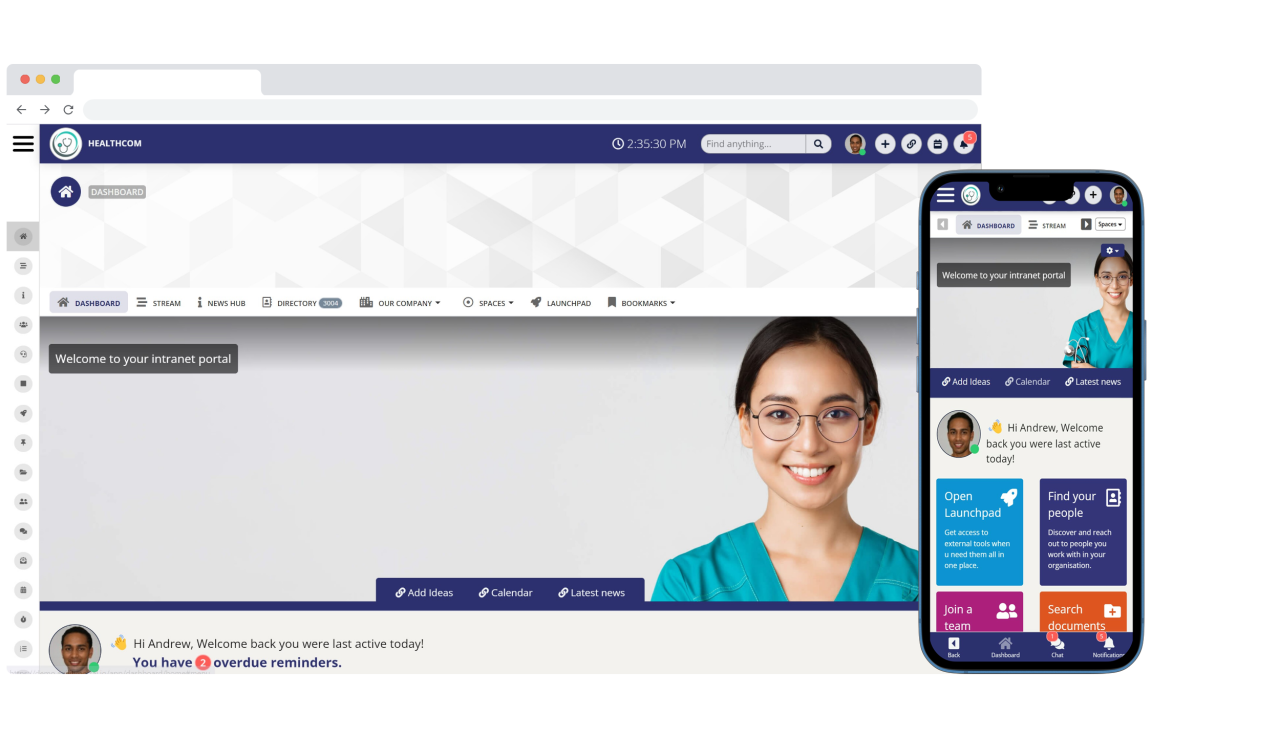Insight Blog
Agility’s perspectives on transforming the employee's experience throughout remote transformation using connected enterprise tools.
14 minutes reading time
(2804 words)
The Value of Team Building in Improving Employee Engagement Retention
This article will delve into the ways team-building activities boost employee engagement and retention, and examine how organizations can use these activities to cultivate a positive workplace atmosphere.
In the dynamic realm of modern workplaces, the importance of employee retention cannot be overstated. With the cost of turnover reaching alarming heights and the competition for top talent intensifying, businesses are under constant pressure to find innovative ways to keep their employees engaged, motivated, and, most importantly, loyal. This is where professional team-building companies like Adventure Games Inc step in, playing a pivotal role in the battle for employee retention.
Team building is a critical factor in an organization's success. High levels of engagement and retention can lead to increased productivity, innovation, and overall organizational performance. One effective tool for improving employee engagement and retention is team building.
This article will explore how team-building enhances employee engagement and retention and discuss how organizations can leverage team-building activities to foster a positive work environment
What Is Employee Retention
Employee retention refers to an organization's ability to retain its employees. Whether turnover rates are high or low, the proper practices and strategies can prevent top talent from leaving.
Employee turnover is typically represented as a percentage and varies by industry. According to the U.S. Bureau of Labor Statistics, turnover rates can range from 20 percent in public-sector roles to 60 percent in professional services.
A robust employee retention strategy addresses voluntary employee turnover. By reducing voluntary turnover, organizations can avoid unnecessary costs and obstacles to growth.
Understanding the Importance of Employee Retention
Before exploring the role of professional team-building companies, it's essential to understand why employee retention matters. While it's well-known that retaining employees saves money on recruitment and training, its significance runs much more profound. Employees who feel valued and recognized are more likely to stay long-term, and using employee recognition software can help track and celebrate achievements, boosting overall morale and engagement.
Firstly, high turnover rates can disrupt workflow, decrease productivity, and negatively impact morale among the remaining staff.
According to a Gallup study, replacing an employee can be one-half to two times the employee's annual salary, highlighting the financial burden of high turnover. Secondly, loyal employees are likelier to go above and beyond, driving innovation and fostering a positive company culture. Research from the Society for Human Resource Management (SHRM) indicates that companies with highly engaged employees experience a 21% increase in profitability. Lastly, a stable workforce enhances a company's reputation, making it an attractive destination for prospective talent.
A report by Glassdoor found that 84% of job seekers consider a company's reputation as an employer necessary when applying for a job.
Organizations can maintain a productive, innovative, and reputable workforce by prioritizing employee retention.
The Challenges of Employee Retention
Now, let's address the elephant in the room: why is employee retention challenging? Numerous factors contribute to this issue. Lack of career advancement opportunities, inadequate compensation, poor work-life balance, and unsupportive management are all significant reasons employees leave. Additionally, in today's job market, where the grass often seems greener on the other side, enticing top talent to stay requires more than just a competitive salary.
The rise of remote work has also added complexity to employee retention. While remote work offers flexibility, it can also lead to feelings of isolation and disconnection from the company culture. This shift requires organizations to find new ways to engage and support their remote workforce. Moreover, employees today value a sense of purpose and alignment with their company's mission and values. A study by Deloitte found that 73% of employees who identify their company as purpose-driven are engaged, compared to just 23% of those who don't.
Therefore, fostering a robust and inclusive company culture and providing meaningful work experiences are crucial to retaining top talent.
The Cost of Poor Team Building and Strategies for Improving Retention
Employee turnover can significantly impact an organization's resources and finances. Studies show that the cost of employee turnover can reach up to 20% of an employee's salary, considering expenses like hiring, onboarding, and lost productivity. These costs can quickly add up, making it crucial for businesses to focus on improving employee retention.
By implementing effective strategies, organizations can reduce employee turnover and maximize productivity. One key strategy is offering competitive salaries. Providing employees with fair compensation can motivate them to stay with the company and attract top talent. Creating a positive company culture is essential for fostering employee loyalty and engagement. When employees feel valued, supported, and happy in their work environment, they are more likely to stay for the long term.
Another strategy for improving employee retention is providing growth opportunities. Employees with clear paths for development and advancement are more inclined to stay with a company. This can be achieved through training and development programs, mentorship opportunities, and internal promotions. Additionally, ensuring adequate support and recognition for employees is crucial.
Regular feedback, rewards, and acknowledging their contributions can significantly boost morale and job satisfaction.
An effective employee retention strategy involves creating an environment where employees feel valued, motivated, and eager to contribute. It focuses on their needs, growth, and overall well-being within the organization.
By investing in employee retention, businesses can reduce turnover rates, retain top talent, and create a positive workplace culture.
9 Ways to improve Employee Retention
#1.Work with a Professional Team Building Company
This is where professional team-building companies step into the spotlight.
These companies design and facilitate activities and programs that foster teamwork, improve communication, and boost organizational morale. But how exactly do they contribute to employee retention? Let's break it down.
Professional team-building companies create customized experiences that help employees build stronger relationships with their colleagues. These activities encourage collaboration, trust, and mutual respect, essential for a cohesive work environment. Additionally, team-building exercises often reveal individual strengths and areas for development, allowing employees to understand better and support each other.
Also, these programs can provide practical tools and strategies to address specific workplace challenges, such as conflict resolution and stress management. By investing in team-building, companies demonstrate their commitment to employee well-being and professional growth. This enhances job satisfaction and fosters loyalty, as employees feel valued and appreciated.
Professional team-building companies create customized experiences that help employees build stronger relationships with their colleagues. These activities encourage collaboration, trust, and mutual respect, essential for a cohesive work environment. Additionally, team-building exercises often reveal individual strengths and areas for development, allowing employees to understand better and support each other.
Also, these programs can provide practical tools and strategies to address specific workplace challenges, such as conflict resolution and stress management. By investing in team-building, companies demonstrate their commitment to employee well-being and professional growth. This enhances job satisfaction and fosters loyalty, as employees feel valued and appreciated.
Ultimately, professional team-building activities contribute to a positive company culture, making employees more likely to stay with the organization. When employees feel connected to their team and engaged in their work, they are less likely to seek opportunities elsewhere, thus improving the overall retention rate.
Follow us and access great exclusive content everyday: Follow us on Google News
#2.Enable Employees to Foster a Sense of Belonging
Incorporating inclusivity and fostering a sense of belonging are vital components of a company's success, although they are often more challenging to quantify than diversity and equity. In essence, inclusivity refers to actions, while belonging pertains to emotions or outcomes resulting from those actions. An inclusive workplace is characterized by fair treatment and accepting employees from diverse backgrounds. However, achieving a sense of belonging goes beyond this; it involves feeling embraced for one's true self and connected to the organization's role and responsibilities.
Creating a culture of belonging is not just a nice-to-have, but a crucial aspect of fostering an inclusive environment. This culture not only breeds positivity in the workplace but also significantly enhances overall job satisfaction. Recent research** underscores this, revealing that a substantial majority (60%) of individuals attribute their job satisfaction and workplace happiness to the freedom to express themselves authentically at work. This is a powerful testament to the impact of a culture of belonging. It's not just about the individual, but also about the organization. Content and fulfilled employees not only tend to remain loyal to their organization but also serve as valuable assets in attracting new talent.
Despite these findings, a notable portion (32%) of survey respondents reported feeling unable to be authentic at work sometimes, rarely, or never.This presents a concern, as employees who cannot express their authentic selves may encounter barriers to open communication, collaboration, and productivity. Such individuals may expend energy attempting to conform to expectations rather than focusing on completing their tasks effectively.
#3.Inspire Communication and Collaboration
Communication is the foundation for sharing information among employees through emails, casual conversations, and messaging. While these interactions typically revolve around work matters, they also touch upon personal experiences. Although communication may not always foster collaboration, effective collaboration cannot occur without it. Team members need to exchange knowledge and ideas to pursue goals collectively.
Collaboration entails working collectively towards a common objective or problem-solving, leveraging diverse expertise for more effective outcomes. Unlike individual work with tasks integrated at the project's conclusion, collaborative efforts involve ongoing discussions, inquiries, and feedback exchange among group members. By pooling skills and resources throughout a project's duration, the team achieves results that surpass individual contributions.
However, despite the pivotal role of effective communication and collaboration in team success, these skills often need more attention in many workplaces. This oversight can lead to misunderstandings, conflicts, and reduced productivity. Professional team-building companies address this challenge by designing activities that compel participants to communicate, collaborate, and solve problems together.
Through experiential learning, employees gain valuable insights into each other's strengths, weaknesses, and communication styles. This fosters smoother collaboration and boosts team performance upon returning to the office.
- According to a survey by Harvard Business Review, 91% of respondents ranked communication as one of the top skills employers seek in candidates.
- Research by Gallup reveals that highly engaged teams show a 21% increase in profitability.
- A study by Deloitte found that organizations with a strong culture of collaboration are twice as likely to be profitable.
- 94% of respondents in a study by ClearCompany agreed that collaborative workplace culture directly impacts employee morale and satisfaction.
You may also like: Best Apps for Employees: UPDATED 2022 – A Complete Guide
#4.Make Sure You Really Boost Morale and Motivate
Let's face it: everyone loves a break from the daily grind. Professional team-building activities inject a dose of fun and excitement into the work environment, giving employees something to look forward to outside of their regular tasks. Whether it's a friendly competition, a team-building retreat, or a themed party, these activities serve as morale boosters, rejuvenating employees and reigniting their passion for their work.
- Offer Recognition and Appreciation: Acknowledge and celebrate employees' achievements and contributions regularly.
- Provide Opportunities for Growth: Offer training, professional development, and career advancement opportunities.
- Foster a Positive Work Environment: Cultivate a supportive and inclusive culture where employees feel valued, respected, and heard.
- Encourage Open Communication: Create channels for transparent communication and feedback to address concerns and promote engagement.
- Promote Work-Life Balance: Support flexible schedules, remote work options, and initiatives to help employees maintain a healthy balance between work and personal life.
By investing in their employees' well-being and happiness, companies demonstrate that they value and appreciate their team members, fostering a sense of loyalty and commitment in return.
#5.Identifying and Addressing Issues
Professional team-building activities not only promote teamwork and lift morale but also serve as a means to unearth underlying organizational issues. By actively observing and participating, facilitators can pinpoint communication barriers, leadership deficiencies, and other challenges that impede team effectiveness.
- Conduct Exit Interviews: Gather feedback from departing employees to understand their reasons for leaving and identify any underlying issues contributing to turnover.
- Analyze Employee Feedback: Regularly solicit input from current employees through surveys, focus groups, or one-on-one discussions to identify areas of concern or dissatisfaction.
- Review Performance and Engagement Data: Monitor critical metrics such as turnover rates, employee engagement scores, and performance evaluations to identify trends and potential retention challenges.
- Assess Organizational Culture: Evaluate the company culture to ensure it aligns with employees' values and promotes a positive work environment. Address any cultural issues that may be driving turnover.
- Implement Retention Strategies: Develop and implement targeted retention initiatives based on the insights gained from exit interviews, employee feedback, and data analysis. This may include offering competitive compensation and benefits, providing career growth and development opportunities, improving work-life balance, and enhancing recognition and rewards programs.
- Provide Support and Resources: Offer support to managers and employees to address retention issues effectively. Provide training and resources to help managers identify and address concerns, improve communication, and foster a supportive work environment.
Armed with this valuable insight, companies can proactively tackle these issues through tailored training, leadership development initiatives, or structural adjustments. By addressing potential problems early on, companies can prevent their escalation and the subsequent loss of valuable employees.
Free ebook: How To Get Your Intranet Off The Ground
#6. Measuring the Impact and changes
Of course, the effectiveness of professional team-building activities isn't just anecdotal; it's measurable. Many companies conduct pre- and post-event surveys to gauge employees' perceptions of teamwork, communication, and morale. Additionally, key performance indicators such as productivity, employee satisfaction, and retention rates can provide valuable insights into the impact of these activities over time.
By tracking these metrics, companies can not only justify their investment in team-building but also fine-tune their approach to maximize its effectiveness.
#7.Fostering Lasting Connections
Professional team-building activities go beyond enhancing productivity; they're about building lasting connections. Whether it's conquering challenges together or sharing moments of joy and success, these experiences create memories that endure beyond the workplace. Research indicates that employees who share memorable experiences are more likely to feel a sense of belonging to their colleagues and the organization, resulting in elevated job satisfaction and, consequently, improved retention rates.
- According to a survey by Harvard Business Review, 71% of respondents believe that team-building activities improve workplace culture.
- Research by Gallup reveals that employees who have a best friend at work are seven times more likely to be engaged in their job.
- A study published in the Journal of Business and Psychology found that team-building activities can lead to a 30% increase in employee retention rates.
- 82% of employees surveyed by ClearCompany reported that participating in team-building activities improved their relationships with colleagues.
#8.Promoting Diversity and Inclusion
Fostering a culture of inclusion is more critical than ever in today's diverse workplaces.
Professional team-building companies are crucial in promoting diversity and inclusion by designing activities that celebrate different perspectives, backgrounds, and abilities. Through collaborative problem-solving and shared experiences, employees gain a deeper understanding and appreciation of their colleagues' strengths and contributions. This, in turn, creates a more welcoming and inclusive work environment where everyone feels valued and respected, reducing turnover and promoting employee loyalty.
Businesses can foster inclusivity in the workplace by recognizing and respecting the diverse holidays and celebrations of different cultures and religions.
Companies can promote multicultural respect among employees by ensuring awareness of these occasions.
One way to do this is by marking major cultural and religious holidays on work calendars, which can quickly be done using tools like Microsoft Office 365. This allows everyone on the team to consider these holidays when scheduling deadlines and meetings, accommodating employees' diverse needs and preferences.
#9.Adapting to Remote Work
As remote work becomes more prevalent, preserving a strong sense of team unity poses a growing challenge. To address this, professional team-building companies now offer virtual activities designed specifically for remote teams.
These range from virtual escape rooms and online scavenger hunts to virtual cooking classes and trivia nights. Such activities provide enjoyable and interactive experiences that bring remote teams closer together, promoting connection and camaraderie despite the geographical separation. Embracing virtual team-building initiatives enables companies to bolster relationships among remote employees and improve retention in the age of remote work.
The Role of Technology in Employee Retention
Employee success is pivotal for business success, and retaining top performers is essential. Utilizing the right software can optimize and expedite retention efforts.
Our employee success software, AgilityPortal, serves as a comprehensive platform designed to enhance employee retention. It offers features such as recognition programs, efficient 1-on-1 meetings, goal monitoring, performance feedback mechanisms, and employee surveys. By leveraging these tools, you can elevate the employee experience and fortify your ability to retain top talent in the long term.
Wrapping up
In today's competitive job market, employee retention has never been more critical. By investing in professional team-building companies, companies can foster a sense of belonging, improve communication and collaboration, boost morale and motivation, and identify and address underlying issues within their organization. While the benefits may not be immediately tangible, the long-term impact on employee retention and overall organizational success is undeniable.
So, the next time you're looking for ways to keep your employees happy, engaged, and loyal, consider partnering with a professional team-building company. Your team—and your bottom line—will thank you for it.
Categories
Blog
(2600)
Business Management
(319)
Employee Engagement
(207)
Digital Transformation
(173)
Intranets
(119)
Growth
(118)
Remote Work
(61)
Sales
(48)
Collaboration
(37)
Culture
(29)
Project management
(29)
Customer Experience
(26)
Knowledge Management
(21)
Leadership
(20)
Comparisons
(5)
Ready to learn more? 👍
One platform to optimize, manage and track all of your teams. Your new digital workplace is a click away. 🚀
Free for 14 days, no credit card required.














